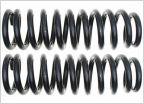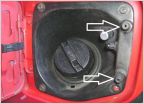-
Welcome to Tacoma World!
You are currently viewing as a guest! To get full-access, you need to register for a FREE account.
As a registered member, you’ll be able to:- Participate in all Tacoma discussion topics
- Communicate privately with other Tacoma owners from around the world
- Post your own photos in our Members Gallery
- Access all special features of the site
P0171 Lean Bank Issue, Help !
Discussion in '1st Gen. Tacomas (1995-2004)' started by Toyota Stan, Mar 8, 2018.
Page 2 of 3
Page 2 of 3


 Stubborn Oil Leak...Need help identifying source.
Stubborn Oil Leak...Need help identifying source. Stereo install kit
Stereo install kit Replace Coil Springs Yes? or No? with Constant Rate Spring
Replace Coil Springs Yes? or No? with Constant Rate Spring Someone took the rubber feet from my gas door :(
Someone took the rubber feet from my gas door :(



